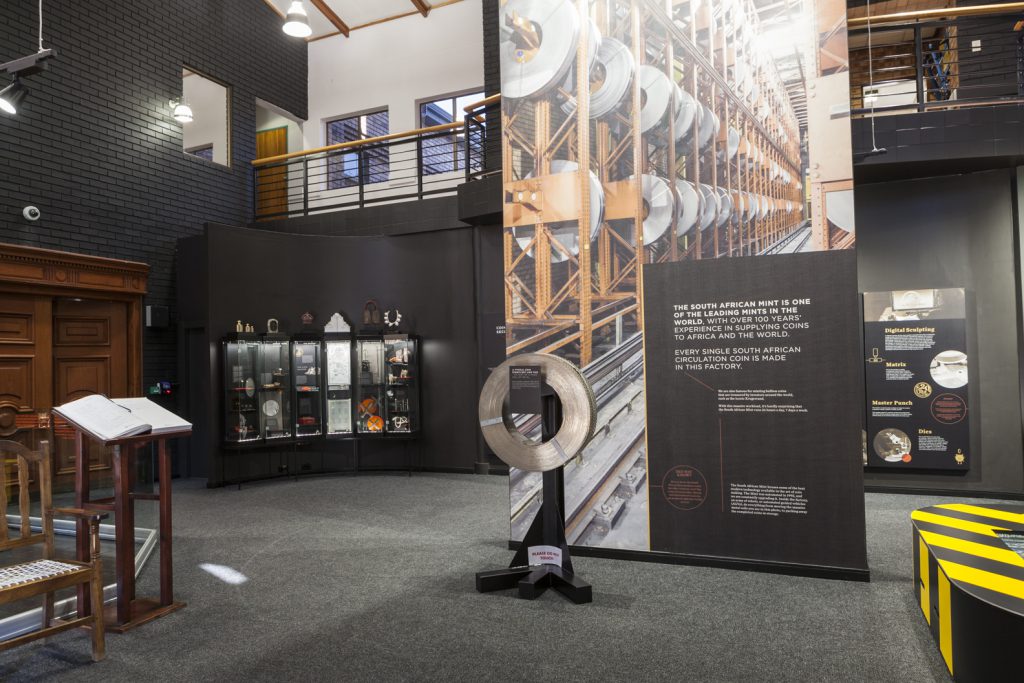The South African Mint has re-opened the doors of its museum after nearly four months of renovations.
The museum’s two distinct themes – circulation coins and collectables – recreate South African history from the perspective of numismatics. It offers visitors a unique opportunity to become familiar with the history of circulations coins from the earliest times up to the present day while exploring the journey from metallurgy to money.
“The museum is a wonderful educational opportunity and I would like to encourage everyone – from parents and children to institutions and tourists – to explore the museum’s collection to learn about our fascinating tryst with money, one that started with bartering,” said managing director Tumi Tsehlo. “The exhibits can’t be seen anywhere in the country but at the coin museum. The interior is more than likely to pique the interests of children, slow them down so that they can learn about the many fun facts of coins, something even Google might not be able to answer.”
CIRCULATION COINS
Visitors are greeted at the museum’s entrance by a large metal coil, from which rolled sheets are used to produce blanks for the country’s circulation coins. Through this new display to the old pantograph – a device used in the manufacture of dies – the museum showcases the meticulous and creative process behind minting circulation coins.
Today, South Africa has more than 26 billion coins in circulation, and the mint is one of the world’s top exporting mints—one of the displays features a map that shows the countries to which the mint either supplied or is suppling coins.
The museum also features historical artifacts telling the story of the humble beginnings of African currency and coins, from Katanga crosses, beads, spear points and Spanish silver reales to copper doits, silver ducatoons, Japanese koban, Russian roubles and several other coins accepted as legal tender.
A veritable treasure trove, the exhibits at the museum include ancient coins dating back to the 1200s that were discovered along the coast of Eastern Cape. The find is rare as there is no recorded history of coins being used in South Africa up until the 1650s.
MINTING PRESS
One of the permanent displays includes the “Oom Paul” Minting Press, named after then-president Paul Kruger, leader of the Zuid Afrikaansche Republiek. One of the oldest presses in the world, it was built in 1891 and ordered by Kruger for use in the first mint established in Pretoria in 1892. “Oom Paul” was originally steam operated though modifications over the years have enabled it to work off electricity, and visitors can still see it in action to date.
“Coins shine a light on history so it’s our vision to use them to tell the story of South Africa and the South African Mint. From the discovery of gold in the 1800s to the county’s first black president, the mint’s coins have documented the ages like a true historian,” added Tsehlo. “The collection will increase your knowledge of coins that were used in South Africa and in addition provide unique insights into the influences on the present day monetary system.”
The refurbished museum also features the design pieces commissioned for the 50th anniversary celebration of the Krugerrand, a South African gold coin first minted in 1967 to help market the country’s gold resources.

